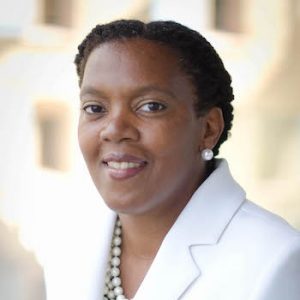
Teaching Oz in Religious Studies – Part III
Playin’ Mas’ – Intertextual Oz
As a person of Caribbean heritage and a scholar of Caribbean and African Diasporic studies, I see elements of Trinidad and Tobago’s carnival in accounts of Geoffrey Holder’s approach to envisioning The Wiz. It was Holder’s costuming, first iterated in sketches, which led to the choreography and storytelling of the The Wiz. As in the tradition of “playin’ mas’” (playing masquerade), movement, music, and costuming are intimately connected. The look and construction of the costuming plays a large part in determining the movement. The cyclone which whisked Dorothy away could be conceptualized as Oya, the Yoruban orisha of the whirlwind and guardian of the cemetery. This reading brings a sensibility to the Oz myth which opens it to other possible readings of text in context. Here, I am thinking about the tragic real-life history of1 expansionist national policies towards “western” landscapes in the late nineteenth century which saw the displacement of Indigenous people. While Baum’s narrative does not overtly touch on this aspect, Oz is peopled by different sorts of beings vying for sustainability given the tyranny of the wicked witches.
This musical theatrical production was adapted as a film in 1978 with the same name, The Wiz. Plot elements were adjusted to accommodate an older Dorothy, now a teacher, played by Diana Ross. Set in an urban landscape, Dorothy’s snow cyclone travel to Oz lands her in a dystopian New York City. The Scarecrow, played by Michael Jackson, delivers a powerful lament about injustice in a new song introduced in the film called “You Can’t Win.” The song “Home,” like its parallel “Over the Rainbow,” is the movie’s emotional heart and center followed by Lena Horne’s Glinda the Good’s impassioned anthem for self-awareness, “If You Believe in Yourself.”
The Wiz reboot of 2024 features a younger cast in which Dorothy’s companions on the Yellow Brick Road are her peers in age. In media interviews director Schele Williams noted that Dorothy, played by Nichelle Lewis, finding community with similarly-aged companions is relevant for a twenty-first-century social context. Williams sees the finding of one’s group of affirming and encouraging peers as a central task of contemporary life.
What does it mean to teach the mythos of Oz twenty-five years after I first contemplated doing so while designing a course which I introduced in 2000? Twenty-five years ago, I focused on how Oz represented changing geographical and cultural landscapes at the turn of another century. The movement from a mostly rural population to more people living in cities was a salient feature of the late-nineteenth and early-twentieth century in the US. Oz, a prison drama television series of the same name was also popular during its six-season broadcast from 1997 to 2003. Where was “home” for incarcerated persons?
As a class, we discussed the hero’s journey with reference to the work of Joseph Campbell and its relevance for science fiction and fantasy narratives including Star Wars (1977) and The Matrix (1999). The course contrasted this search for home with diaspora identities and religious traditions where the search for home complicates Dorothy’s assertion that “there’s no place like home.” Other retellings include Geoffrey Maguire’s 1995 Wicked: The Life and Times of the Wicked Witch of the West, which is based on both Baum’s 1900 novel as well as the 1939 MGM musical. A Broadway musical called Wicked based on Maguire’s book premiered in 2003. Here the Oz mythos is retold from the point of view of a character who is usually positioned as Dorothy’s arch nemesis.
The Oz mythos remains a rich field for exploration in religious studies classes. It is still eminently teachable today. The text’s multiple and continued readings and reinterpretations, across a variety of genres, make it especially suitable for study. Students are exposed to the concept and practice of intertextual reading, and to the subfields of film and religion and visual cultural studies. These in turn allow for the study of shifting cultural signifiers and the enduring legacy of powerful stories. Teaching Oz in the twenty-first century allows for continued exploration of the meaning of home, community, and individual and collective journeys in an ever changing and shifting geographical and cultural landscape.
There are many metaphorical yellow brick roads. I would want students to explore North American S/F (speculative fact and fiction) and fantasy literatures and their intersection with religious studies. Situating Oz as an important (although certainly not the only) origin point for fantasy literature in a North American landscape including its tensions, contradictions, and continued troubling legacies would be a richly rewarding teaching and learning experience. Oz should be put into dialogue with the texts of Octavia Butler, for instance. In my past teaching, I taught Oz alongside the imagined worlds of Star Wars and the emancipatory visions of Rastafari. Teaching Oz opens possibilities for journeying through visual and textual studies and exploring their meanings in comparative contexts.
Leave a Reply